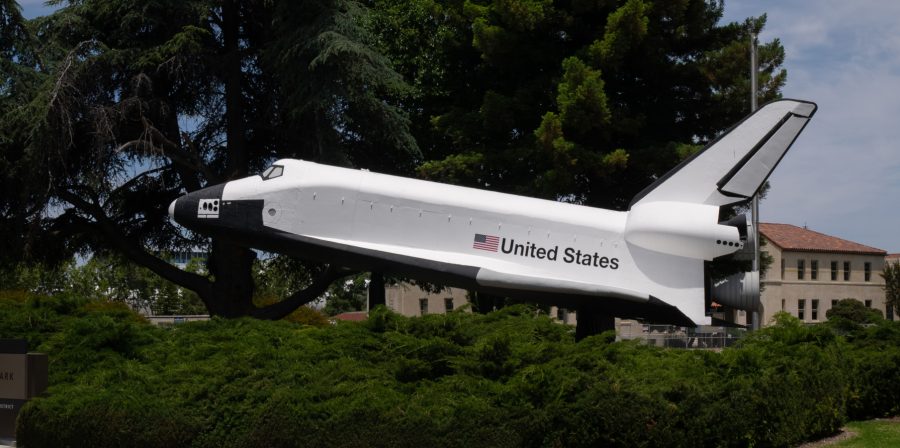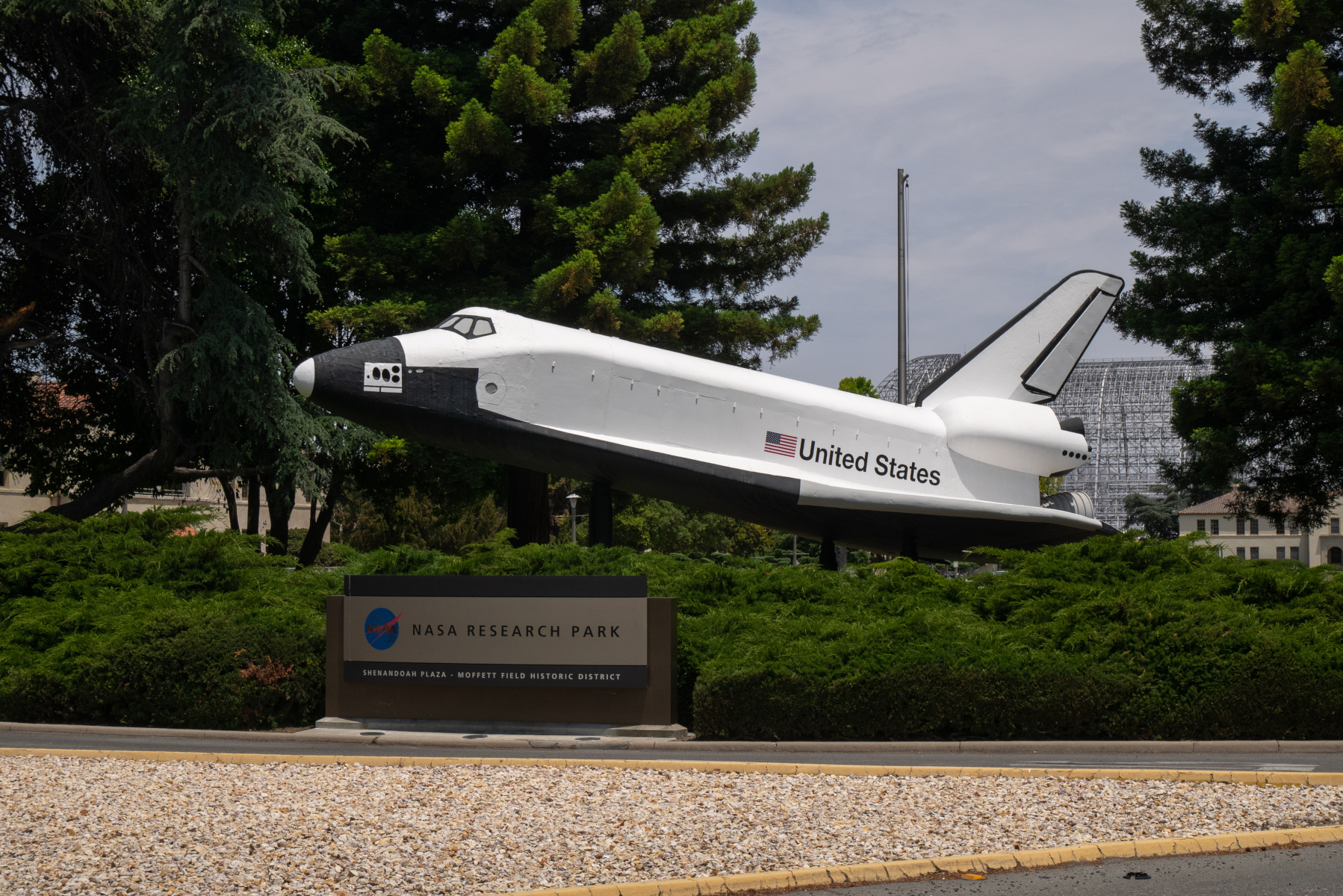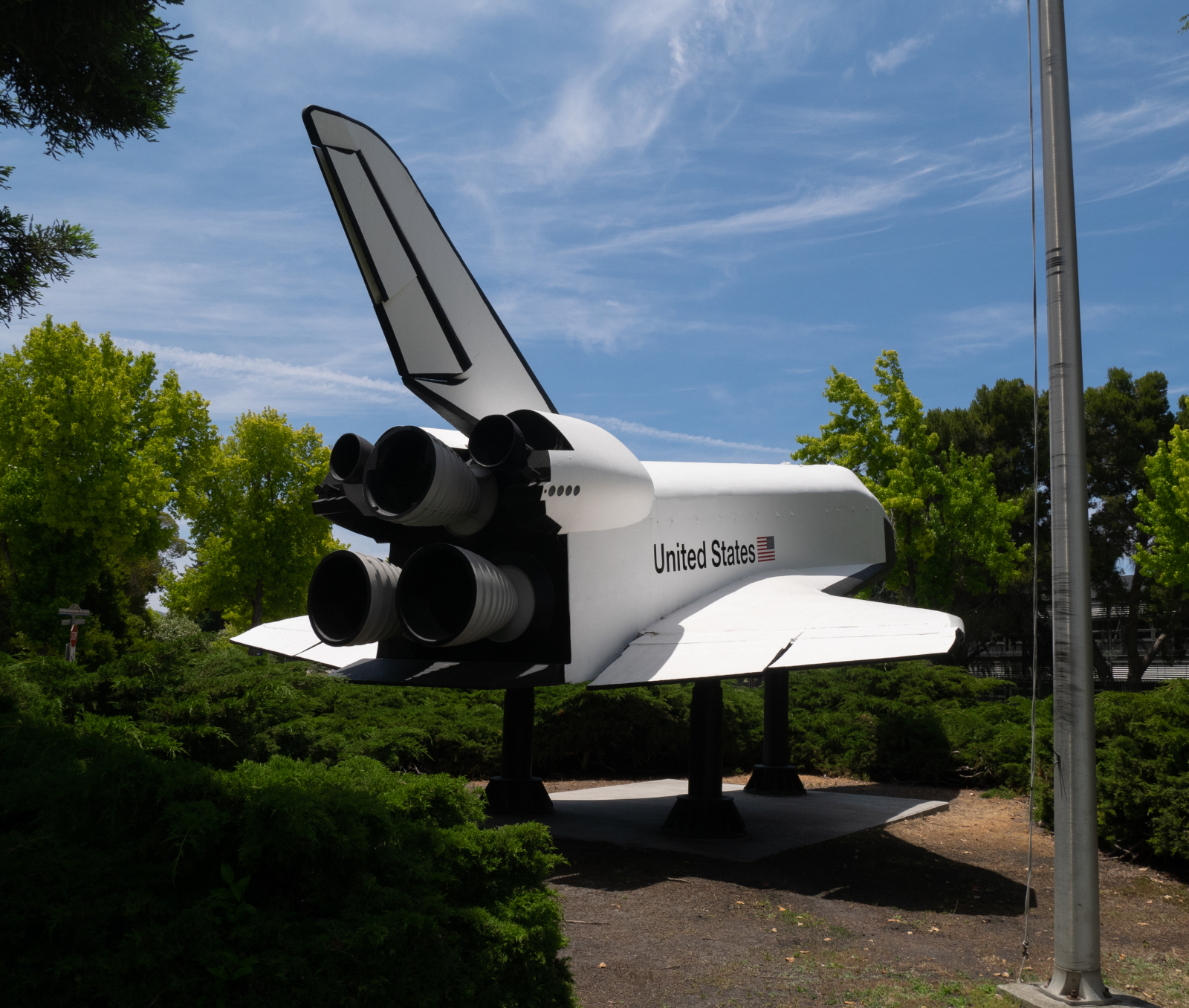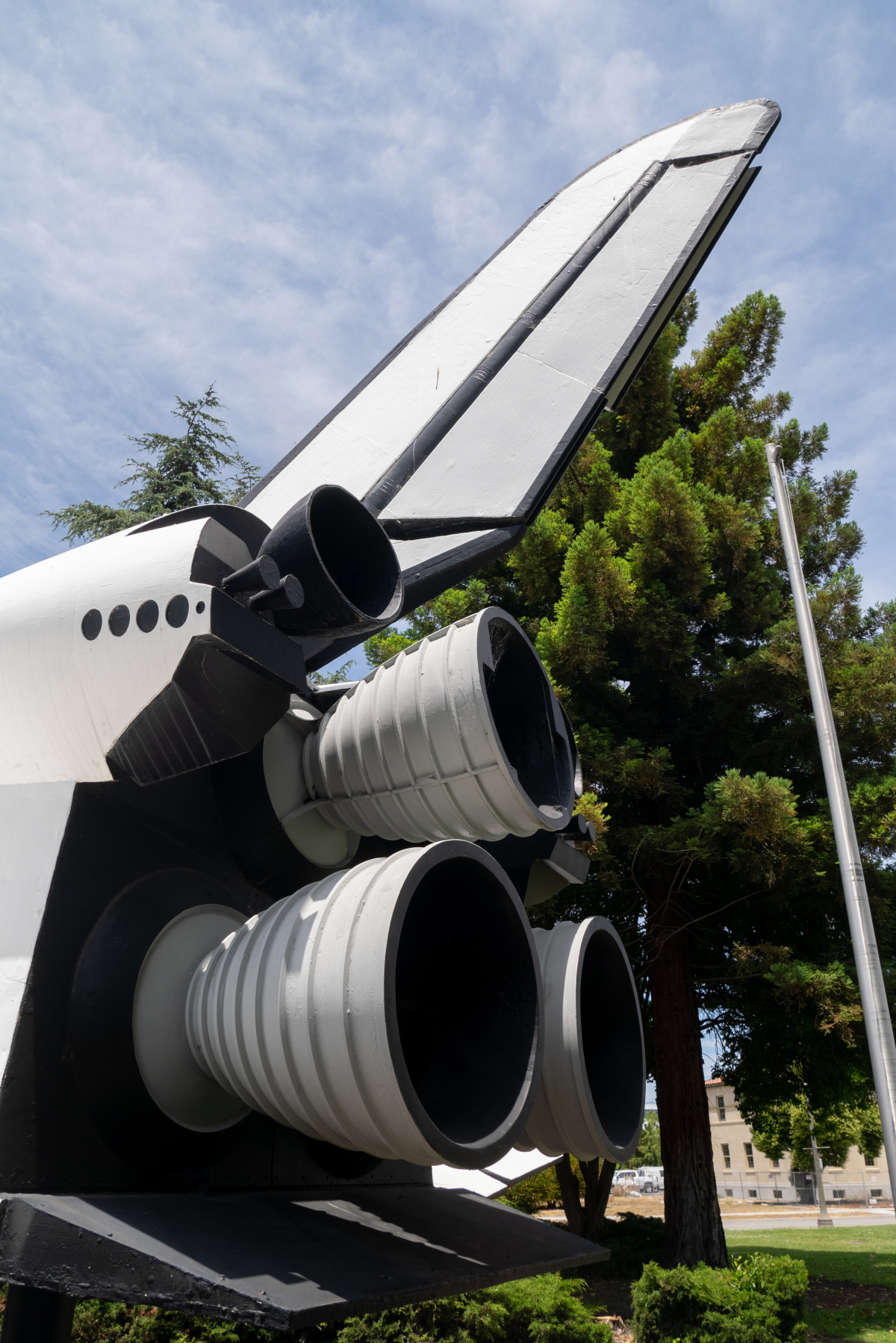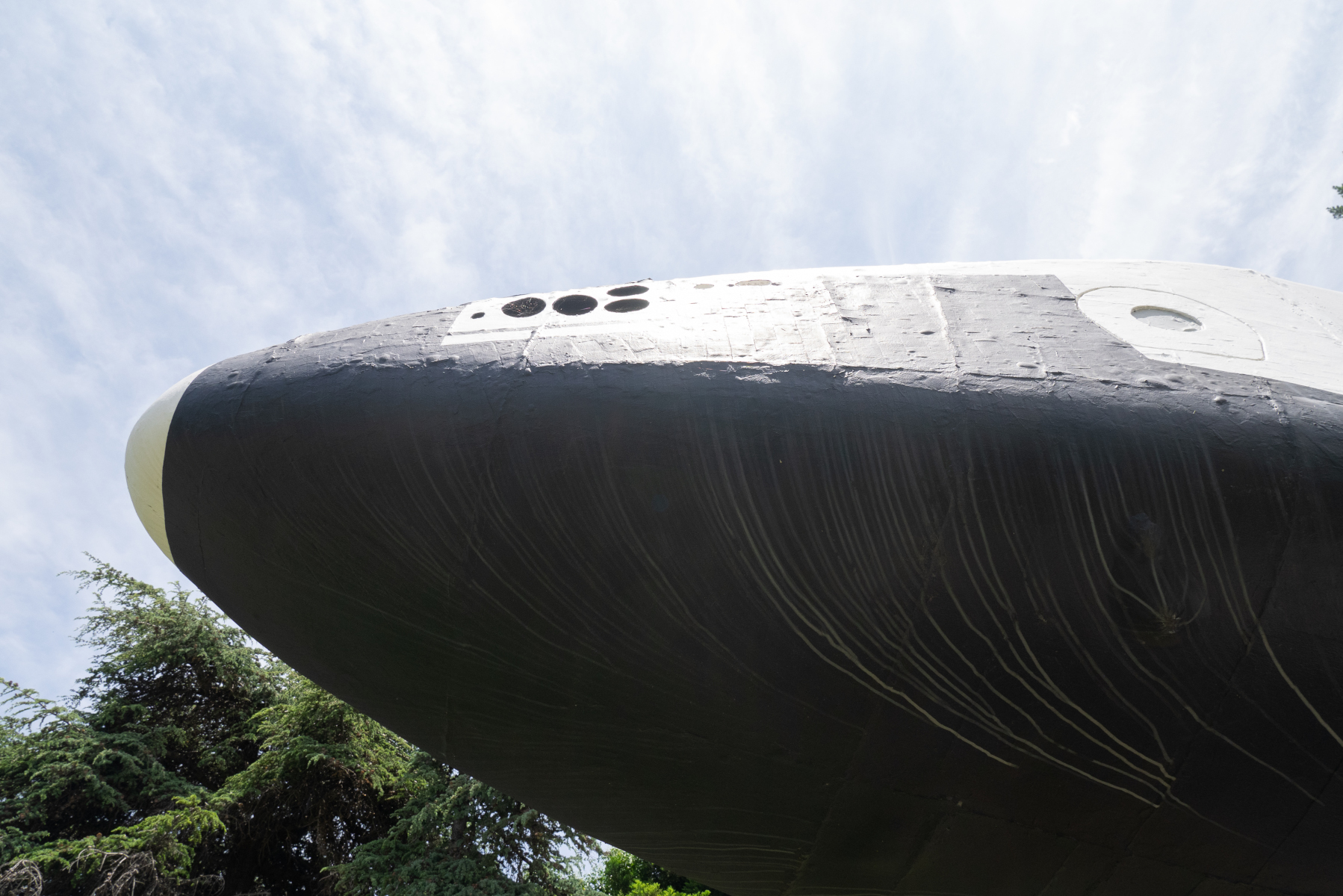MOFFETT FIELD, California, USA – Just inside the front gate of Moffett Field in Northern California, a large model of the Space Shuttle Orbiter stands on three pylons. The model’s nose is high as if it is flaring for a landing on the street leading into the government airfield.
Although there are no plaques or historical markers anywhere to attest to this fact, the model is in fact a relic of the Space Shuttle program, like the orbiter Endeavour in Los Angeles. Unlike Endeavour, the Moffett Field model never flew into space; but as a precision engineering model, it had its own important role to play in the Space Shuttle program. During the development of the Space Shuttle in the 1970s, NASA tested the model extensively in the large 40-by 80-foot wind tunnel at Ames Research Center at Moffett Field.
The Moffett Field model was the largest of several Space Shuttle models tested in the wind tunnels at NASA Ames from the early 1970s until the end of the Space Shuttle program in 2011. Some of the models represented the entire shuttle stack, with External Tank and Solid Rocket Boosters; these models simulated the launch of the shuttle into orbit. Other models, like the Moffett Field model, represented only the Orbiter, as it returned from space and slowed from hypersonic speeds to a gliding landing on a runway.
One of the purposes of the Moffett Field model was to simulate the flow of air over the thermal protection tiles on the underside of the orbiter. The tiles were installed with small gaps in between them, to allow the aluminum body of the shuttle to expand and flex as it heated or cooled during flight. The thermal protection tiles are thus all individually modeled on this model. This is why the model is so large: 0.36-scale, or just over one-third the size of a real Space Shuttle Orbiter.
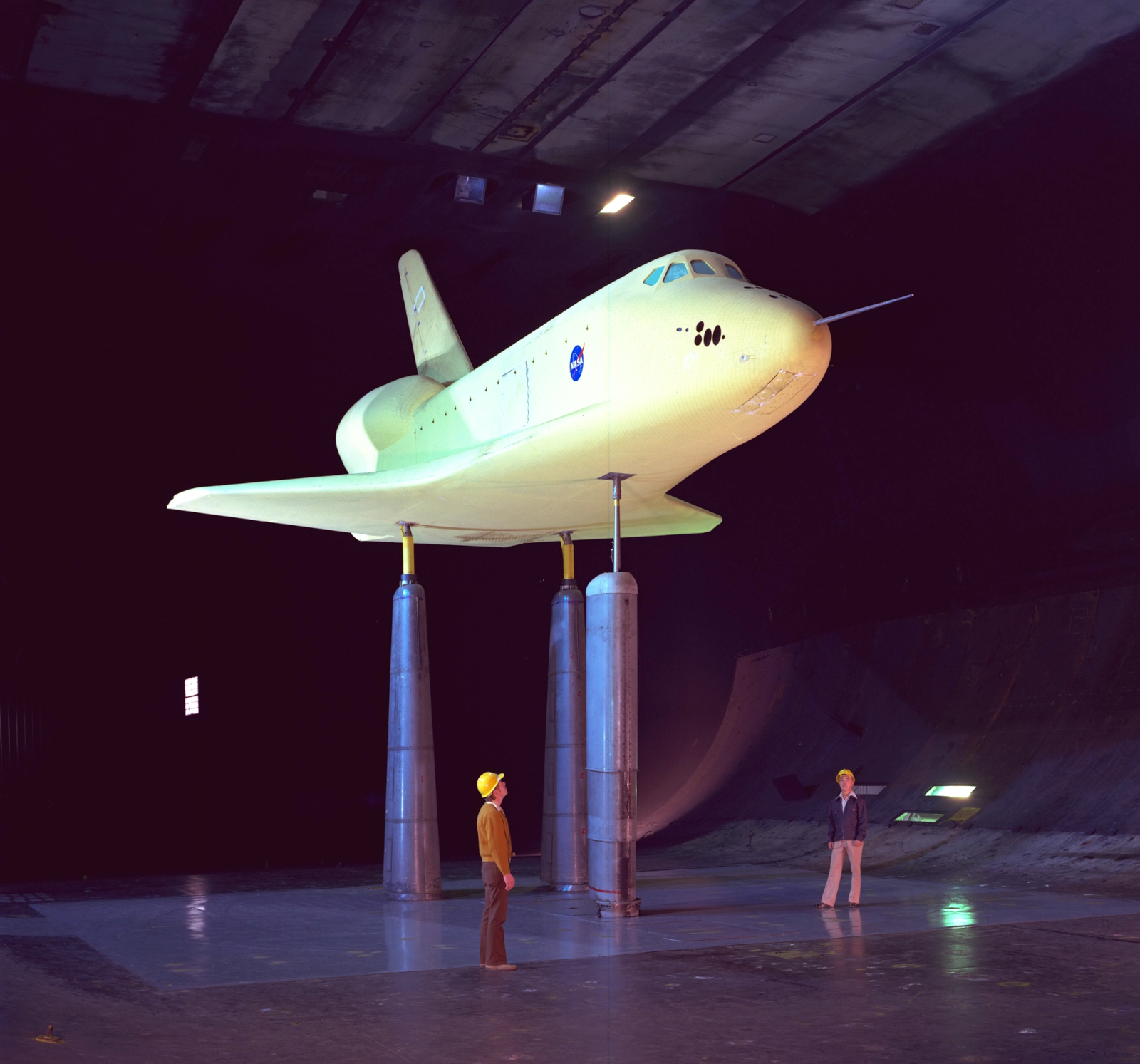
The 0.36-scale shuttle model during testing in the 40×80-ft wind tunnel at NASA Ames, February 27, 1976. (Source: NASA)
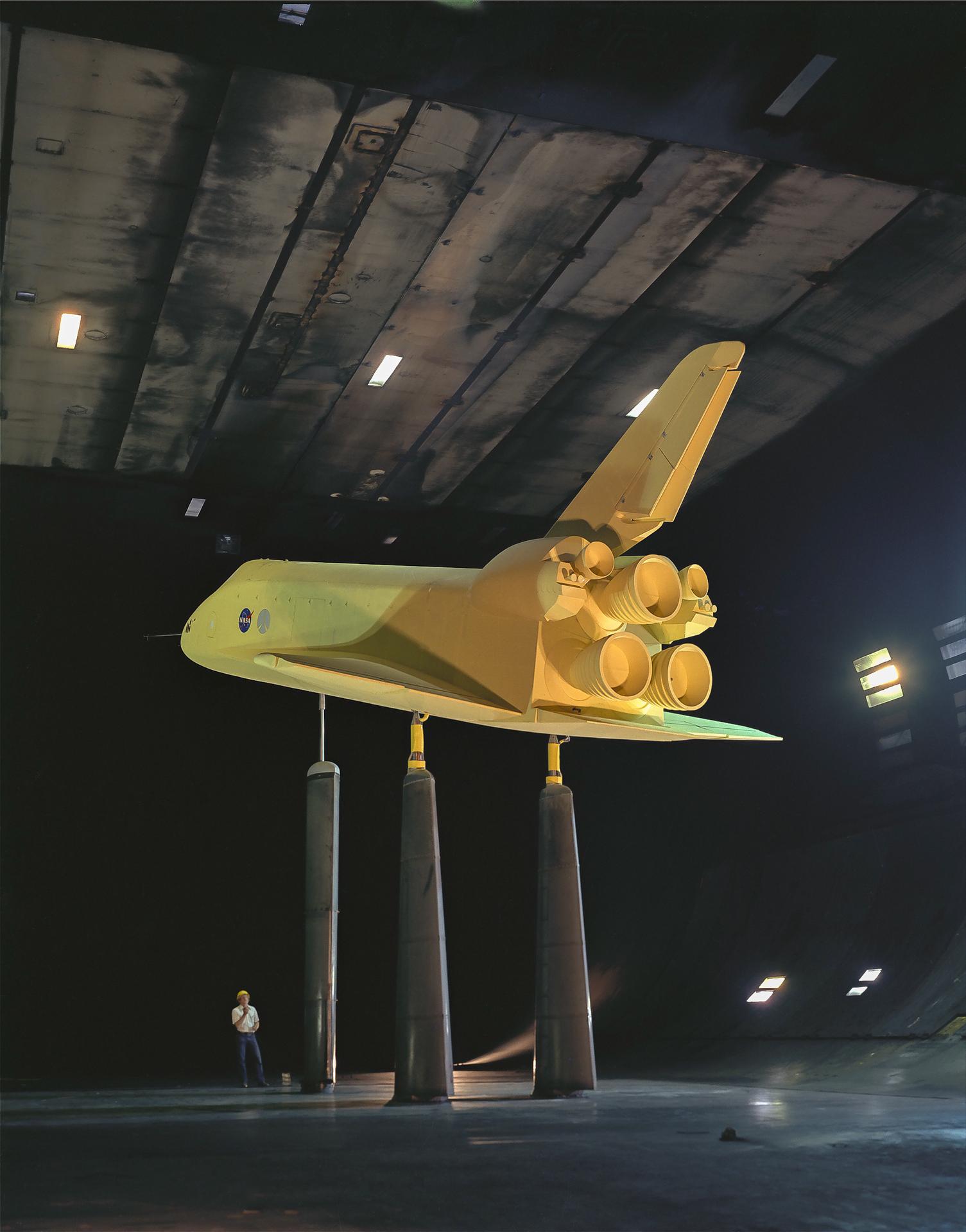
Rear view of the 0.36-scale model during testing, May 20, 1975. (Source: NASA)
The Moffett Field model has been outside for quite some time, and it is a little the worse for wear. Back in the seventies, it was painted a canary-yellow color over its entire surface. Now it is painted like a real shuttle orbiter, with white on the top and black on the bottom. The after-the-fact coat of paint is thick, and in some places it has been stained by the Northern California rain.
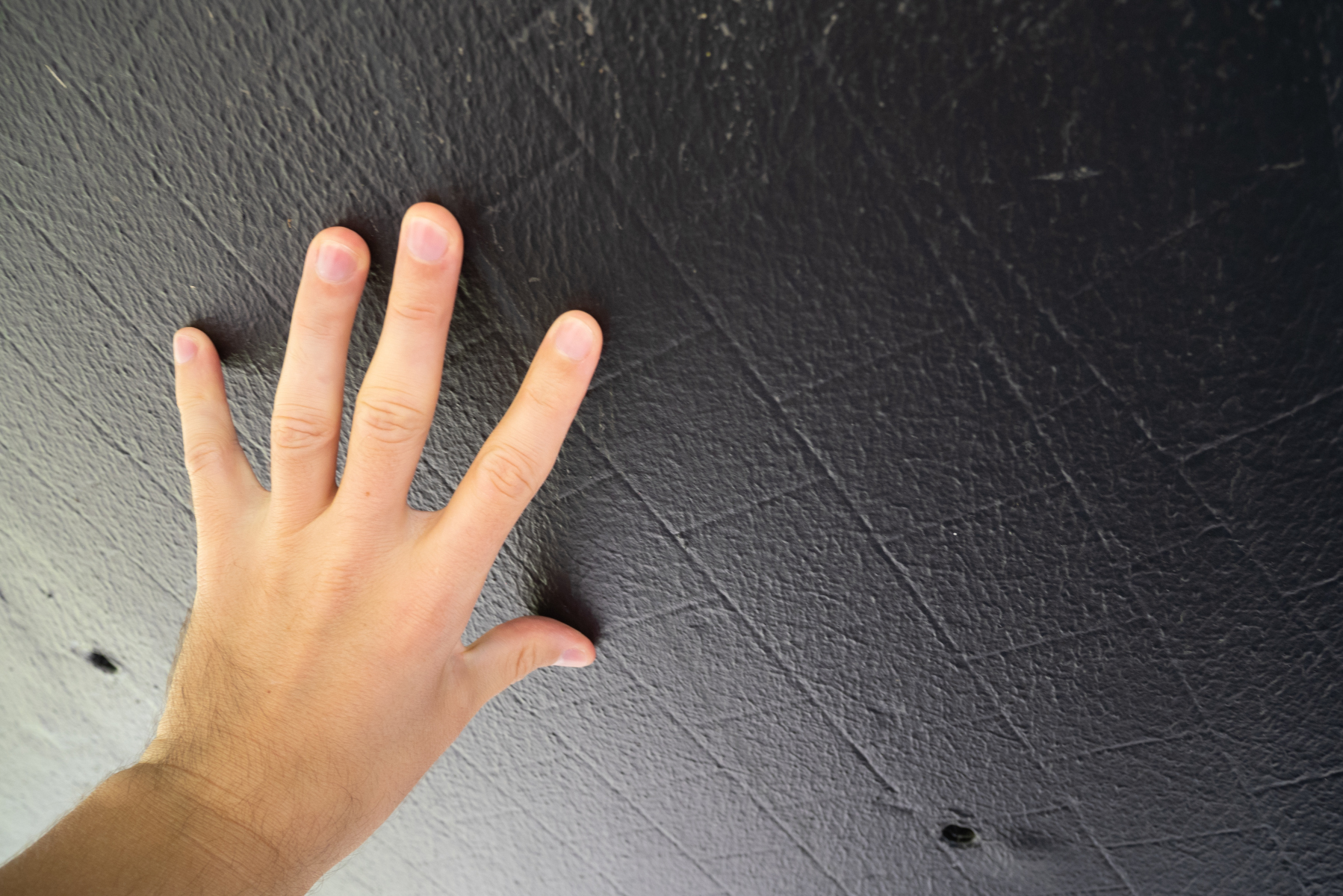
Your blogger’s hand touching the underside of the wind tunnel model, with the individual tiles visible.
Moffett Field is located in Silicon Valley, where Apple, Google, Facebook, and other titans of Information Technology have their headquarters or major offices. But long before IT, Moffett Field was a center for another type of technology. Starting with its role as the West Coast base for the Navy’s airship program in the mid-1930s, and continuing with the establishment of NACA Ames Aeronautical Laboratory (now NASA Ames) in 1939, Moffett Field has long been a center for aviation and aerospace. In the twenty-first century, the wind tunnels at NASA Ames continue to do research for Orion and other programs.
I’m glad that the 0.36-scale wind tunnel model has been preserved, but it needs to be better-taken care of and better-interpreted. Big Tech tends to take up all the air in the room in the Bay Area, but Moffett Field and NASA Ames are as much a part of the history of Bay Area technology as Apple, Google, and Facebook.
Further reading
I learned about the Moffett Field shuttle model in Development of the Space Shuttle, by T.A. Heppenheimer, a terrific book about the engineering that went into the shuttle between the program’s initial approval by President Nixon in 1972 and the first flight in 1981. An evocative NASA photo of the model in the 40-by 80-foot wind tunnel appears on the front cover of the book. Development of the Space Shuttle is the sequel to The Space Shuttle Decision, another excellent book by the same author, which is available for free from the NASA History Office.
By the way, the South Bay has another link to the Space Shuttle program: Lockheed Missiles and Space Systems, just to the east of Moffett Field in Sunnyvale, is where the thermal protection tiles were manufactured—an incredibly exacting process.

